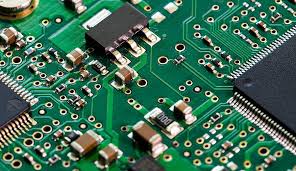The next key point of an electronic prototype is where the prototype PCBs are ordered, as this is a step you are going to get a sneak preview on what your design will look like, and gives you an idea if it is going to work. Engineers and Designers, This is What You Must Consider During This Critical Era was originally published in Noteworthy — The Journal Blog on Medium, where people are continuing the conversation by highlighting and responding to this story.
Select the Right Material
Material is everything, choose the right topic. While FR4 is a favorite due to its balance of performance and cost but in some applications, materials of higher thermal conductivities or lower dielectric constants are needed. As an example, while Rogers has superior dielectric properties, it is also priced higher than other materials, and hence is often selected for high-frequency applications.
Choose The Right Board Thickness and Size
The size of your PCB has a large impact on how it will perform, as well as how it is going to be able to be manufactured. They normally set between 0.8 to 1.6 mm standard thickness, but you can range from 0.2 mm upto 2.4 mm for super thin or double wall based on your need. The form factor also becomes critical both in size constraints when the device has to be small or fitting into certain enclosure dimensions.
Layer Count and Configuration
The number of layers in your prototype PCB can affect both the cost and complexity. To keep the costs down, chips were made with as few layers as possible (zero to eight layers); with more layers, both design complexity and chip density would rise. Most prototypes starts from 2 to 4 layers, sometimes modern electronics require a 6 layers or more. In short, every layer adds functionalities in terms of more power planes needed from routing in a way to minimize interference for digital circuits.

Resolution of PCB Features
How detailed the PCB can get is defined by the resolution of the features that can be manufactured on the PCB, with respect to the trace width and the via size. This can go from standard width of a bit less than 0.1 mm to very fine lines <0.05 mm for components on HDI boards. The creation of smaller features makes possible more complex circuits on smaller boards, though that may also increase cost and manufacturing complexity.
Turnaround Time
When ordering prototypes, be sure to keep turnaround time as a major deciding factor. Speed to market is improved which can help expedite the development cycles but often with increased cost. These tradeoffs between speed and cost should be well understood, particularly when operating on short development timeframes.
More: Check Out the Capabilities of Each Manufacturer
PCB manufacturers do not all have the same capabilities, nor do they all specialize in the same types of PCBs. You need to choose a manufacturer who not only have the required production features but that also support the design specifications of your prototype PCB. This comprises the verification of their multilayer board capabilities, proficiency in HDI technology and whether they can deliver functional test after manufacturing.
Selecting the right PCB manufacturer and the prototype specification is the key to the success of product development. A few aspects of the design make this possible, which makes the prototype phase simultaneously efficient and effective and enables a seamless transition to mass production.
